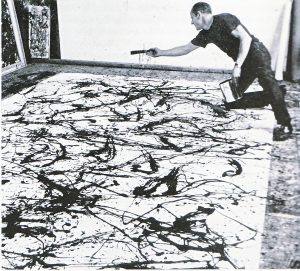A fractal is, so to speak, an anomalous set for our senses, although this anomaly has to do with the way our senses perceive space; the strangeness of a fractal is therefore sensory and not mathematical. At the heart of this anomaly is the concept of spatial dimension, a concept that the German mathematician Felix Hausdorff (1868-1942) greatly enriched in 1919. Hausdorff found the classical way in which the dimension of an object was understood, both mathematically and philosophically, to be very poor and, therefore, he found the corresponding classification of bodies according to their dimension to be very simplistic. Hausdorff said that it was very unsophisticated, and even incorrect, to say that an object has dimension one if it has only length – a thread, or a spring, for example; dimension two if in addition to length it has width – a sheet of paper or the surface of a sphere; and dimension three if in addition to length and width it also has height – a sphere or a shoebox. To enrich the classical concept of dimension, Hausdorff proposed a much more sophisticated and mathematically richer notion. Hausdorff’s notion makes it possible to measure the dimension of an object much more precisely; it turns out that, contrary to what our sensory intuition tells us, there are objects with fractional dimensions, say with dimensions 1/2 or 5/3, or even \(\sqrt 5\), or even worse numbers. More than half a century after Hausdorff specified his new concept of dimension, Benoît Mandelbrot (1924-2010), a mathematician of Polish origin but raised in France, baptised with the name of “fractals” those sets whose Hausdorff dimension is fractional.

One of the most surprising applications of fractals has to do with the artistic creation of Jackson Pollock. The American painter was the prototype of the cursed artist, with problems with alcohol and so on. He died in 1956 in a traffic accident at the age of 44. Peggy Guggengheim was his patron. “The modern painter,” Pollock once said, “cannot represent this age of the aeroplane, the atom bomb and the radio in the old Renaissance style. Every age has its own technique”. True to this motto, he founded Abstract Expressionism in the mid-1940s. For this he used large canvases to which he applied his “drip and splash” technique. In 1946 he converted a huge barn on Long Island into his studio, placing the canvases on the floor. “It increases the intimacy with what I paint; it makes me feel part of the painting, since I can move around, work from all four sides and literally be in the painting. That’s why I try to stay away from traditional tools, such as the easel, palette and brushes. I prefer sticks, palette knives and fluid paint that drips and runs, and even a thick impasto made of sand, ground glass or other materials. One critic said: “That painting is not art; it just is. It is not a painting of a thing, it is the thing itself, it does not reproduce nature, it is nature”. Pollock’s paintings exude movement, graphic rhythm, vitality not without violence, and at the same time a profound tenderness.
In 1999, Australian scientists R. Taylor, A. Micolich and D. Jonas published an article in Nature in which they announced that Pollock’s paintings from the “drip and splash” period had fractal structures, generated both by the way the paint dripped – differences in the width of the drops and drips – and by the geometric configuration of the drips and splashes that the painter spilled in his flights around the painting. Scientists came to measure the fractal dimension of these structures. Their calculations showed that this dimension began to take on values greater than 1 – that is, his painting really began to be fractal – in the mid-1940s; from then on it increased steadily and progressively until it reached values of around 1.7 in 1952 for the dimension of the chaotic patterns generated by the dripping of the paint, and 1.9 for the dimension of the chaotic configurations due to Pollock’s movement. The pattern of growth of these numbers was so uniform, so regular in the works analysed, that it could be used to determine the authenticity of Pollock’s works, and even to date them.
It is impossible that Pollock could deliberately control these fractal dimensions, and it is certain that he did not even know anything about the fractal character of his paintings. It was pure intuition, pure style. Pollock’s way of working is well known, there are films that show how he created. He touched and retouched over and over again; and added drops here and drips there in a process that could take months before a painting was finished. The thing was complex and it is known that he discarded many canvases with which he was not satisfied; and that he cut the edges of others because there his painting was not as twisted as in the rest of the picture. These characteristic fractal dimensions, which the Australian scientists managed to calculate, are but one measure of Jackson Pollock’s artistic style.
References
A.J. Durán, Pasiones, piojos, dioses… y matemáticas, Destino, Barcelona, 2009.
R. Taylor, A. Micolich y D. Jonas, Fractal analysis of Pollock’s drip paintings, Nature, 399 (1999), 422.

Leave a Reply